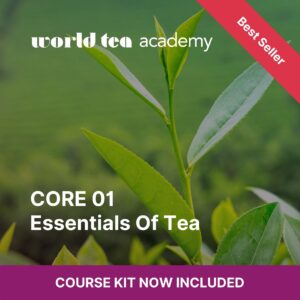Description
All the courses included CORE SERIES Complete Bundle:
In the World Tea Academy’s CORE SERIES Bundle, you’ll deepen your tea expertise through six comprehensive courses, exploring tea’s history, brewing mastery, global cultivation, sensory evaluation, and quality assessment.
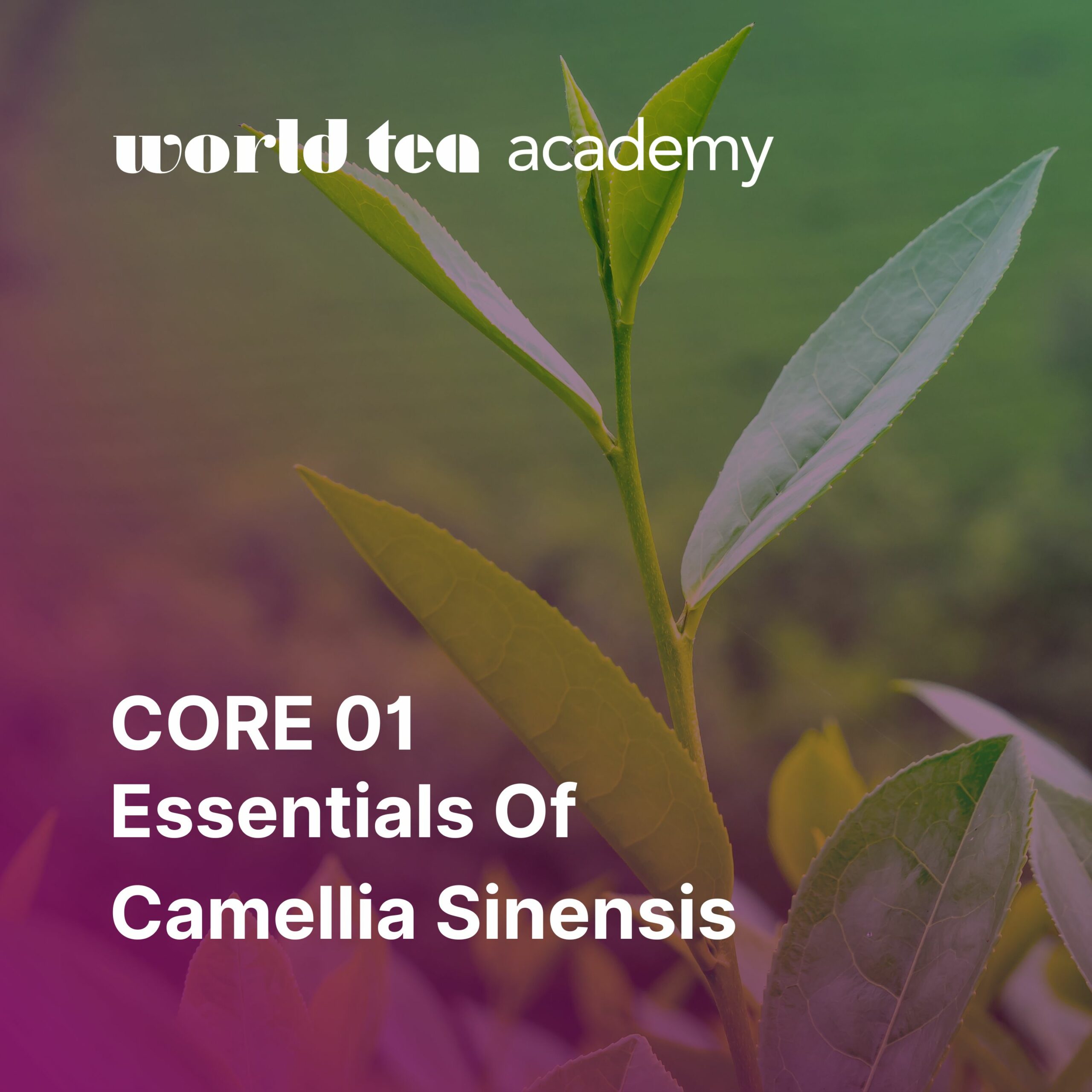
CORE.01 Essentials of Camellia Sinensis
With a strong foundation in the background of the tea plant and how teas are manufactured, we begin our journey to countries of origin and a detailed approach to terroir. And we rightfully start off with our focus on the birthplace of tea – China. Then we will travel to Korea, a smaller country of origin but home of quality green teas that are making a name for themselves around the world.
This class will also explore two countries of origin highly influenced by China but truly unique unto their own – Japan and Taiwan. Again, we conclude with a focused cupping of these regions and continue to add to your experience and confidence in the organoleptic evaluation process.
What you will learn:
- Name the three factors that make it possible for the one tea plant to produce so many different kinds of tea.
- Describe the tea plant’s botanical origins and primary commercial varieties.
- Define variety, cultivar, and landraces and the significance of these in tea cultivation.
- Name and describe the six stages of tea processing.
- Name the six types of tea.
- Identify the defining stage of processing for each type of tea.
- Set up and conduct a professional tea cupping session for the sensory evaluation of teas.
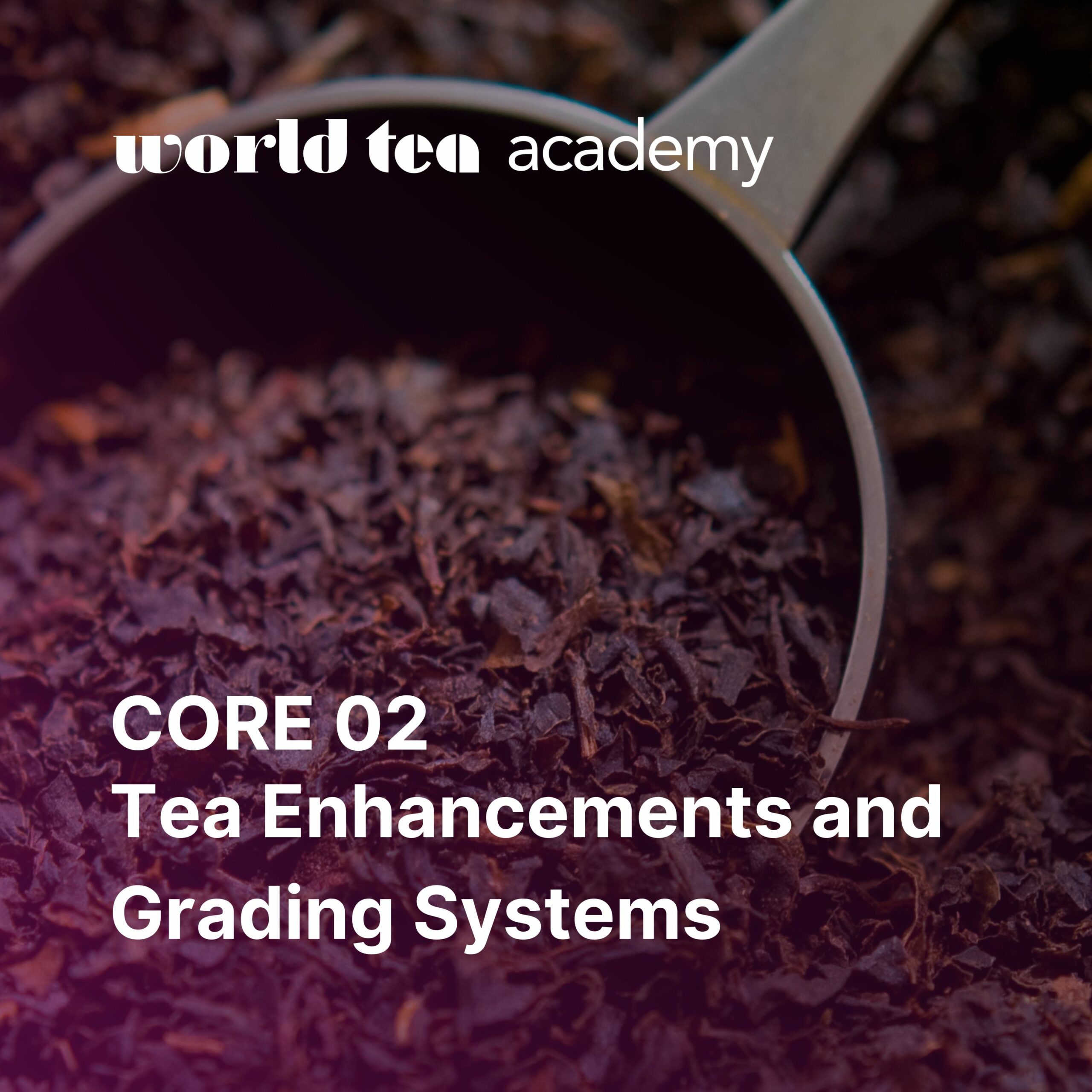
CORE.02 Tea Enhancements and Grading Systems
Building on the foundation material of CORE.01 and understanding how a single plant can create hundreds of kinds of tea, we will explore the post-manufacturing processes such as baking, aging, blending, flavoring, and more. In the second section of this fundamental class, we will sort through the alphabet soup of tea grading systems and look at the meaning and methods used for grading tea in China, India, Sri Lanka, Japan, and Taiwan. The last section will focus on the sensory evaluation of teas that have received post-manufacturing processes.
What you will learn:
- Name and describe six post-manufacturing processes used in the tea industry.
- Describe the difference between blending, flavoring, and scenting.
- Define and differentiate decaffeinated and caffeine-free teas.
- Understand the impact of flavoring and decaffeination on labeling.
- Understand and describe the various grading and naming systems used in the tea industry.
- Understand the hygroscopic nature of tea and its impact on packaging, storing, and other processes.
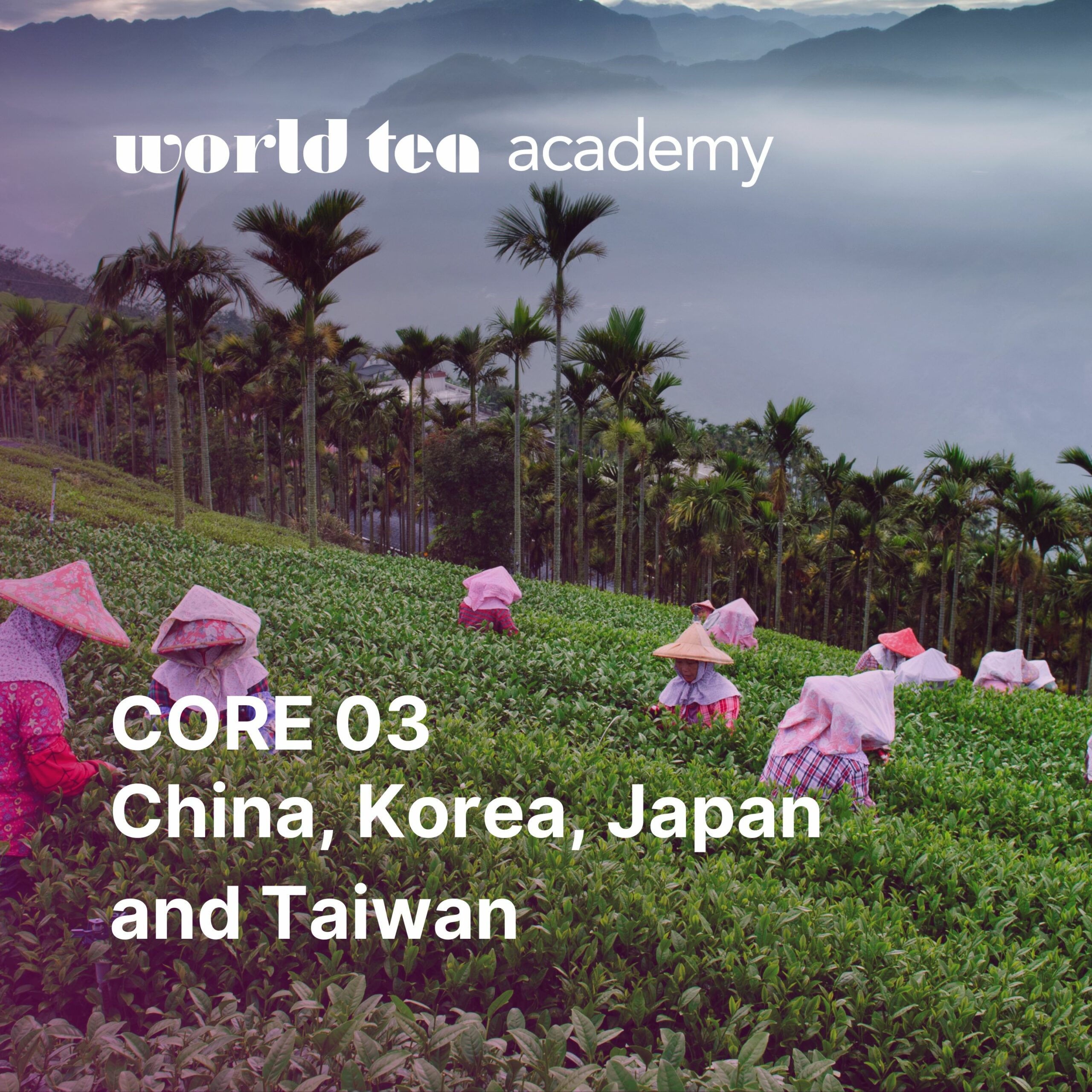
CORE.03 China, Korea, Japan, and Taiwan
With a strong foundation in the background of the tea plant and how teas are manufactured, we begin our journey to countries of origin and a detailed approach to terroir. And we rightfully start off with our focus on the birthplace of tea – China. Then we will travel to Korea, a smaller country of origin but home of quality green teas that are making a name for themselves around the world.
This class will also explore two countries of origin highly influenced by China but truly unique unto their own – Japan and Taiwan. Again, we conclude with a focused cupping of these regions and continue to add to your experience and confidence in the organoleptic evaluation process.
What you will learn:
- Name the major tea-producing regions of China, Korea, Japan, and Taiwan and their notable teas.
- Identify teas from each country and understand their manufacturing processes.
- Describe the classic characteristics of teas from each of the key tea-growing regions.
- Discern the difference between the teas of various terroirs of each country.
- Understand the history of tea in each of these countries and their tea industries today.

CORE.04 India, Sri Lanka, and Kenya
The second class in our exploration of major producing countries shifts to the south. Here we discover the beauty and characteristics of teas from India, Sri Lanka, and Kenya as we further our review of the world of tea including history and lore. In CORE.04 we continue to build the essential cupping skills required for all tea professionals.
What you will learn:
- Name the major tea-producing regions of India, Sri Lanka, and Kenya and their notable teas.
- Identify teas from each country and understand their manufacturing processes.
- Describe the classic characteristics of teas from each of the key tea-growing regions.
- Discern the difference between the teas of various terroirs of each country.
- Understand the history of tea in each of these countries and their tea industries today.

CORE.05 The Infusion
Most of the classes in the core curriculum focus on the tea plant and how and where it is grown and manufactured. This class explores the process that transforms the tea leaf into the final product – a cup of tea. By looking closely into the three components of the process we will explore what is in the cup and how it got there.
What you will learn:
- Name and define the three components of the infusion process.
- Understand how the chemical and physical characteristics of the tea leaf influence the infusion.
- Understand how the chemical and physical characteristics of water influence the infusion.
- Understand how the conditions of the infusion process influence its outcome.
- Name the chemical components found in the infusion.
- Describe what each chemical component contributes to the flavor and aroma profile of the infusion.

CORE.06 Beyond Camellia Sinensis
In the final online class for our core curriculum, we extend our knowledge of tea to an overview of the many botanical infusions other than Camellia sinensis. Our focus will be on the most popular herbals in the market such as Rooibos, Yerba Mate, Guayusa, and more. The first week includes an exploration of humankind’s long relationship to botanical infusions as well as an in-depth explanation of the correct vocabulary for what (technically) is and isn’t ‘tea.’ Sensory evaluations of several herbal infusions conclude the class.
What you will learn:
- Define tea and botanical infusions and know the difference between the two types of beverages.
- Understand the historical significance of botanical infusions to humankind.
- Name and describe the four different historical lineages of the use of herbal treatments.
- Understand the FDA’s stance regarding claims about the benefits of specific herbs in a commercial setting.
- Identify and describe over a dozen popular caffeine-free botanicals.
- Identify and describe popular botanicals other than tea and coffee that contain caffeine.

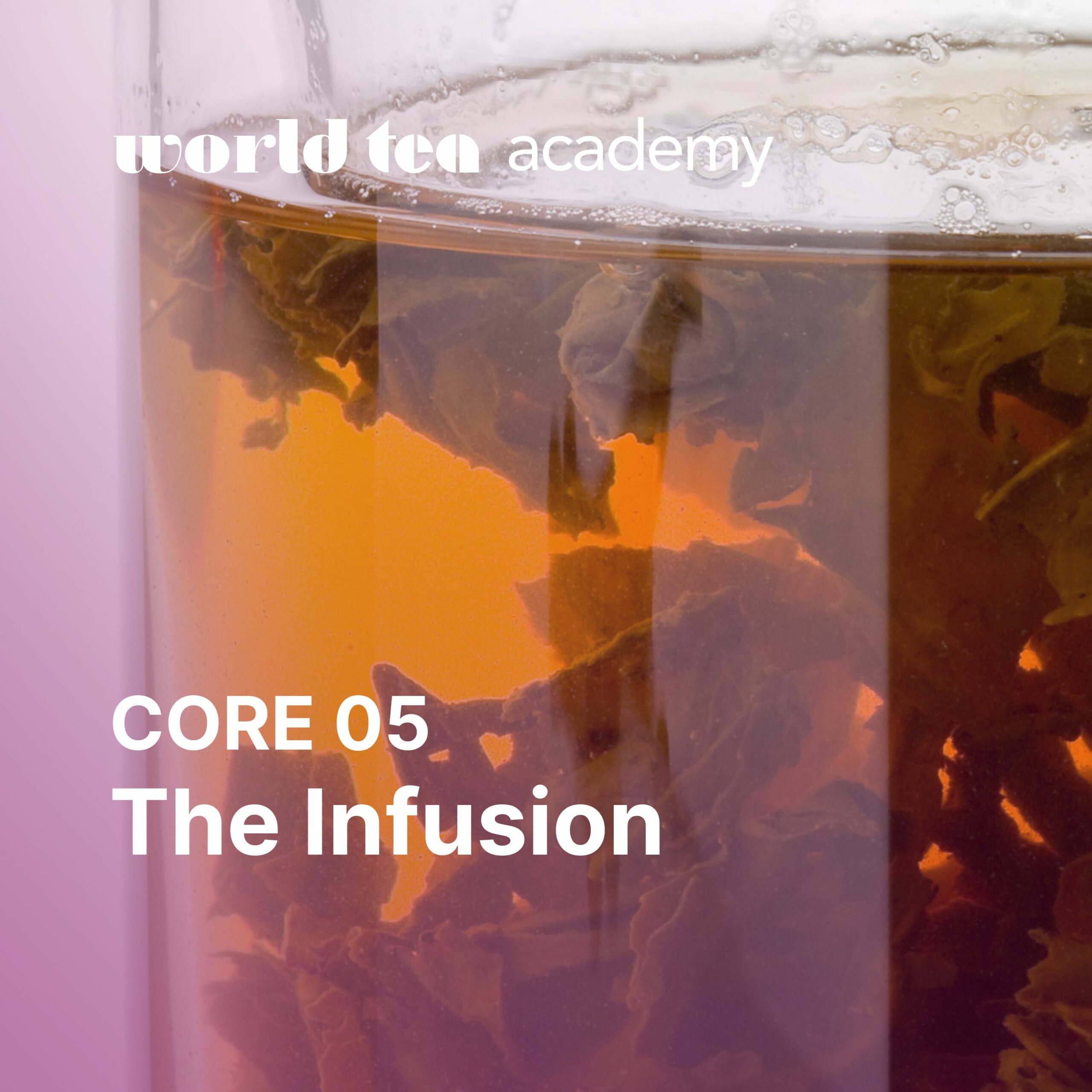 CORE.05 The Infusion
CORE.05 The Infusion CORE.06 Beyond Camellia Sinensis
CORE.06 Beyond Camellia Sinensis

